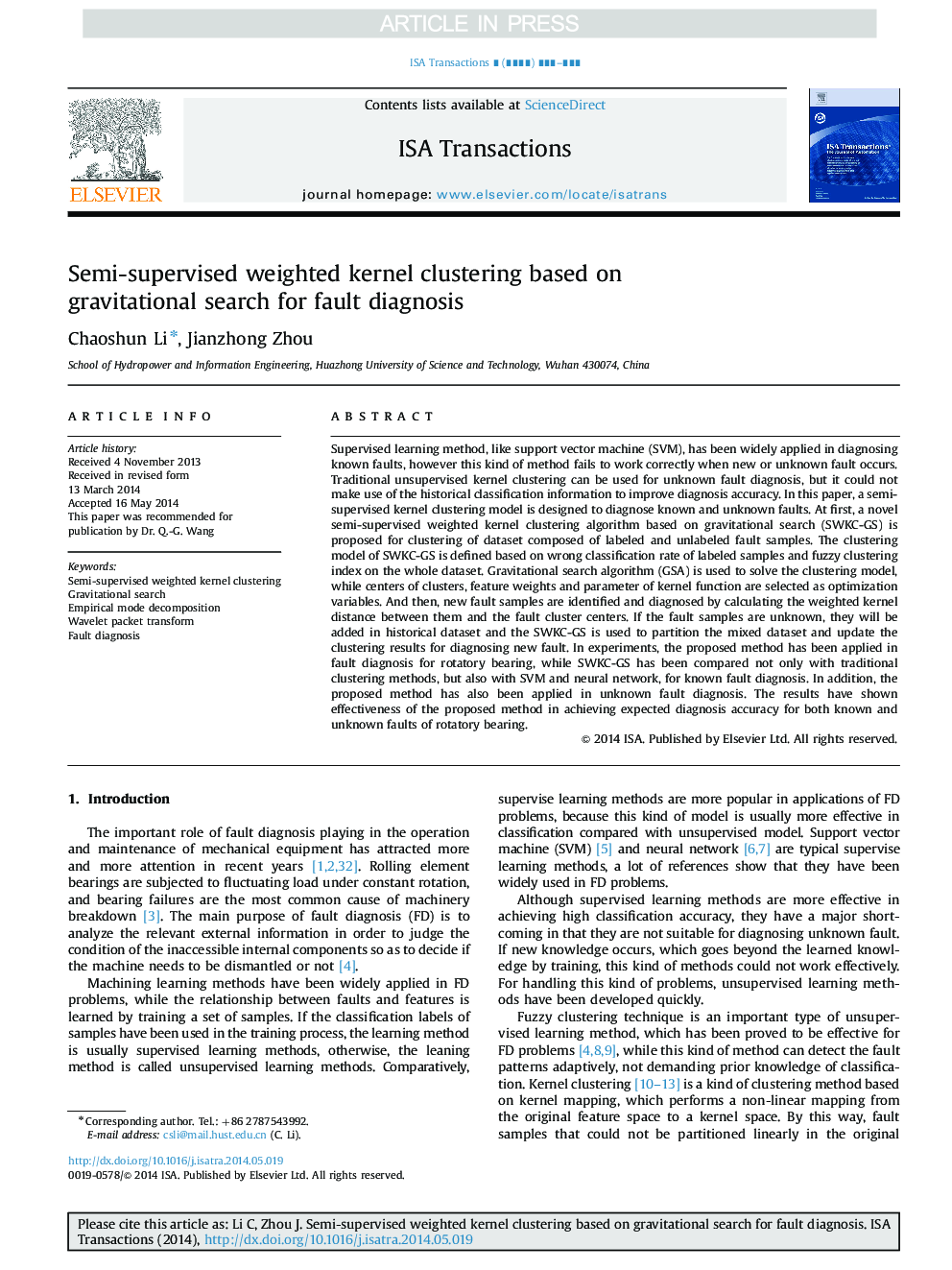| Article ID | Journal | Published Year | Pages | File Type |
|---|---|---|---|---|
| 5004718 | ISA Transactions | 2014 | 10 Pages |
Abstract
Supervised learning method, like support vector machine (SVM), has been widely applied in diagnosing known faults, however this kind of method fails to work correctly when new or unknown fault occurs. Traditional unsupervised kernel clustering can be used for unknown fault diagnosis, but it could not make use of the historical classification information to improve diagnosis accuracy. In this paper, a semi-supervised kernel clustering model is designed to diagnose known and unknown faults. At first, a novel semi-supervised weighted kernel clustering algorithm based on gravitational search (SWKC-GS) is proposed for clustering of dataset composed of labeled and unlabeled fault samples. The clustering model of SWKC-GS is defined based on wrong classification rate of labeled samples and fuzzy clustering index on the whole dataset. Gravitational search algorithm (GSA) is used to solve the clustering model, while centers of clusters, feature weights and parameter of kernel function are selected as optimization variables. And then, new fault samples are identified and diagnosed by calculating the weighted kernel distance between them and the fault cluster centers. If the fault samples are unknown, they will be added in historical dataset and the SWKC-GS is used to partition the mixed dataset and update the clustering results for diagnosing new fault. In experiments, the proposed method has been applied in fault diagnosis for rotatory bearing, while SWKC-GS has been compared not only with traditional clustering methods, but also with SVM and neural network, for known fault diagnosis. In addition, the proposed method has also been applied in unknown fault diagnosis. The results have shown effectiveness of the proposed method in achieving expected diagnosis accuracy for both known and unknown faults of rotatory bearing.
Related Topics
Physical Sciences and Engineering
Engineering
Control and Systems Engineering
Authors
Chaoshun Li, Jianzhong Zhou,
